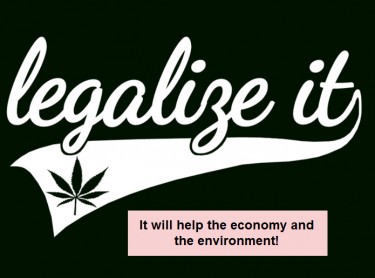Cannabis News
Weed Made Me a Loser
Published
2 years agoon
By
admin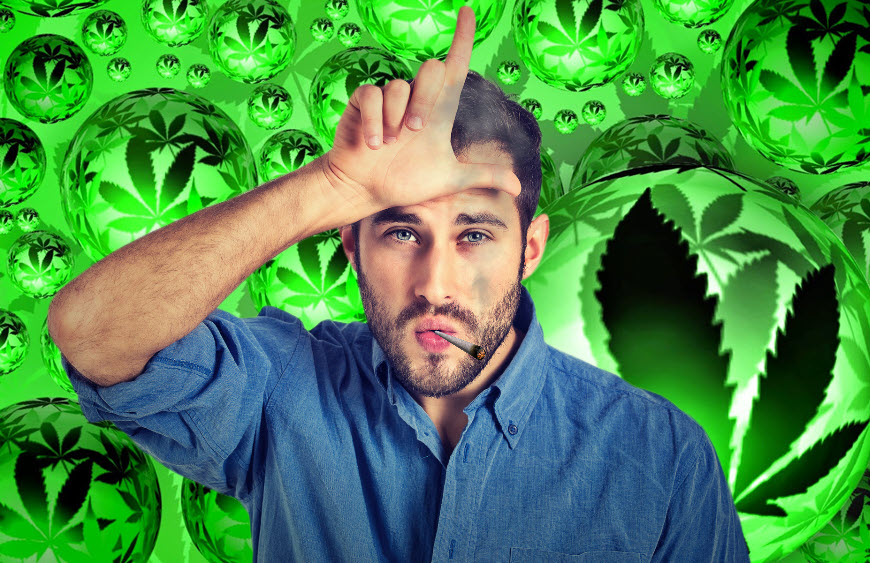

How to still achieve all your goals while being blazed!
There’s many times when I read online about people blaming weed for them being lazy. This is odd to me because I smoke weed every single day and I wouldn’t use the word “lazy” to describe myself.
I wake up most mornings at five AM, drink some coffee, do a bit of meditation and breathwork, and then I execute a carefully constructed exercise routine while invoking my Astral Temple and setting my intention for the day.
Yea, it sounds a bit weird when I write it out like that, but the fact of the matter is that every day I’m doing 100 push-ups in varied positions, 60 yogi squats, 20+ minutes of planking, and other fitness movements.
I do this all before the clock strikes 6 AM.
What do I do after that?
I take a few puffs from a joint, sit back, relax – and plan out my day. I focus on what will move me closer to my main objective, what are my maintenance activities, and what I’d like to achieve at the end of the day.
Then – I execute.
So why is it that I can smoke weed and get shit done, but other people get “bush-whacked by the weed?” Is it because I am some extraordinary human being who have different capabilities than them?
Well – yes, but so is every single individual human being on this planet. While I do possess different talents than everyone else, we all have the same time in a single day – and a key to being an effective human being is knowing how to spend your energy and where to focus your attention.
For the people who are clamoring about how “weed makes them lazy”, I say quit using weed as an excuse for your mediocre life.
Yep, I said it.
If you’re having issues with productivity, with the feeling of success, or not being “happy” – I hate to break it to you…it’s not the weed homey!
While the weed could be used to treat your symptoms of depression and anxiety, it unfortunately cannot “save you” from your pitiful situation. Yet in the same way that it cannot save you from your existential angst, it also cannot be blamed for it either.
After all, cannabis didn’t roll itself up and forced its way into your body. There was a person pushing all the buttons and pulling all the levers every single step of the way.
Hint – The Person is YOU!
When I hear “the weed made me a loser”, I only hear the words of a victim who is incapable of accepting responsibility for their state of being. As long as you remain in a state of victimhood, incapable of facing the dark and nasty parts of the self – you will continue to feel hollow, shitty, unproductive, unattractive and all the mean shit you tell yourself as you masturbate yourself to sleep.
Today, I’m going to show those of you who have been “struggling” to get shit done, while baked. I’ll tell you the secret to being productive and to feeling “successful!”
First you must establish how you measure success
Most people are not unhappy because of their current life circumstances, but rather the “difference in between what they have and what they believe they should have”. In other words, they are chasing after something they believe would give them happiness, or success, or fulfillment – yet even after attaining that which they so desperately seek, they still feel incomplete.
In the world of the “weed-blamer”, the reason for all their unhappiness or inability to produce any significant result has nothing to do with their own limitations or lack, but rather the endless pursuit of illusionary goods.
Earl Nightingale, was an American radio personality, motivational speaker, and author. He is known for his influential work in the field of personal development and is often regarded as the father of the modern self-help movement. While he had various perspectives on success throughout his career, one of his most well-known definitions of success is:
“Success is the progressive realization of a worthy goal or ideal.”
According to Nightingale, success is not merely achieving a specific outcome or attaining a certain level of wealth or status. Instead, he emphasized that true success lies in the ongoing pursuit and progress toward meaningful goals and ideals. The key is to set worthwhile objectives and work steadily towards their realization, finding fulfillment in the journey itself.
Nightingale also stressed the importance of personal growth, learning, and continuous improvement as essential elements of success. He believed that success is within the reach of anyone who is willing to define their own goals, develop a plan, and consistently take action towards their desired outcomes.
So the real question we’re left with is simple; “What is it that you truly want in life that will give you that which you desire?”
Are you even CLEAR about your own goals and objectives?
If you don’t have any clear goal or objective, then how could you measure whether you’ve gained an inch or not? How do you know when you are successful if you have nothing special in sight?
Now, some of you might come up with the excuse that you “do” have goals. You might be studying to become some occupation you might not in your heart of heart want, but makes sense form a logical perspective.
For example, “I’m going to be a doctor!” not because you have a deep calling to heal people and to dedicate your life to medicine…but because they get paid a lot.
If this is your “objective” or “goal”, I hate to break it to you – it’s not yours! It’s a false goal that promises to give you something you really want – MONEY!
If you’re studying to become a doctor for money, there are far easier and more effective ways to make money. If money is your motivation, then it will be easy for you to put things off, and why not smoke weed? I mean, your heart isn’t really into the whole “law school” or “med school” or whatever false objective you think you want to achieve.
Perhaps, you’re just doing what you’re doing because “society” deems it to be important.
None of these goals pertain to YOU. Your wants and desires are as unique as your fingerprints. Meaning, that only when you align with something you REALLY want, you’ll be able to start feeling that feeling you so desperately seek – fulfillment!
When you get CLEAR on your goals and objectives, you can start focusing your mind and attention on attaining it. You can begin devising a plan and move towards it. And when you have attained that which you desired – you will be successful! In fact, you don’t even need to attain it to be considered successful, as our buddy Earl said, “Success is the progressive realization of a worthy goal or ideal.”
How to get CLEAR on your goals?
You might think that it’s the weed that inhibits you from achieving your goal, but the truth is that you don’t have something that wants you to get out of bed at 5 AM in the morning. It’s okay, I didn’t have it for many years.
But once you find it, you become single-minded in your pursuit. It’s not that you spend every day working on it (which is optimal), but rather that you dedicate whatever time you have available to make it happen.
So the question is how do you know what you want?
Well, for starters, you need to stop “thinking” about it and start “feeling” it. In this instance, weed can actually be a help.
You can spark up and sit quiet, remove all distractions and just focus in on smoking your joint or bong or pipe. I call this “Mindfulness Toking”.
When you sit there, you’ll notice the thoughts in your head come alive. It’s in this moment of mental mobility that you have the opportunity “feel” your thoughts. Just ask yourself a simple question, “What is the one thing that I would love to do right now if I had no restrictions, nothing to hold me back? If money wasn’t a concern…”
It doesn’t matter how crazy or insane it may seem. The purpose of this first exercise is to simply understand what the heart wants.
When you find a thought or idea that really excites you. Take a moment and visualize you achieving the goal or objective. How does it feel? Do you still feel happy and complete? Or does it not matter that much whether you achieved it or not?
When you find something that the heart loves, you’ll know. You’ll get excited, you’ll know even though it sounds crazy.
Here’s the catch, that something crazy is always right under the surface of your being. Meaning, in all likeliness you already know what you want, you’ve just convinced yourself that it’s not for you because of money, or status, or whichever reason you come up with to tell you that you can’t possibly do “that!”
Once you have pinpointed your main objective, you need to make sure that it’s CLEAR.
CLEAR is an acronym that stands for Concise, Limited, Emotional, Achievable, and Refinable. It is a framework for setting effective and actionable goals. Let’s break down each component:
-
Concise: A CLEAR goal should be clear and specific, avoiding ambiguity. Clearly define what you want to achieve, making it easier to focus your efforts and track progress.
-
Limited: Goals should have a specific time frame or deadline. Setting a time limit provides a sense of urgency and helps you prioritize tasks accordingly.
-
Emotional: Connecting with the emotional aspect of your goal is essential. Ask yourself why you want to achieve it and how it aligns with your values and aspirations. Emotionally compelling goals fuel motivation and persistence.
-
Achievable: Ensure that your goal is realistically attainable. Consider your resources, skills, and circumstances. It’s important to set challenging goals, but they should still be within your reach with effort and commitment.
-
Refinable: Goals should be flexible and subject to refinement. As you progress and gain new insights, you may need to adjust your approach or modify the goal itself. Embrace the idea of adaptability and be open to making changes as necessary.
To set up a CLEAR goal, follow these steps:
-
Identify the specific outcome or achievement you want to attain. Make it clear and unambiguous.
-
Define a specific timeframe or deadline for achieving the goal. This helps create a sense of urgency and provides focus.
-
Connect with the emotional aspect of the goal. Understand why it matters to you and how it aligns with your values and aspirations.
-
Evaluate the goal’s achievability. Assess your resources, skills, and circumstances to determine if it is realistically attainable.
-
Keep your goals flexible and open to refinement. As you progress, be willing to adapt and make adjustments to your approach or the goal itself.
Remember to write down your CLEAR goals and regularly review them to stay focused and motivated. Break them down into smaller, manageable tasks, and track your progress along the way. This is especially effective if what you truly desire is “way too big for your current self to embody”.
What I mean by this is if you can’t believe that you are a millionaire, then you can start by believing and working towards making money than your monthly income – passively. This would be the first step in the progress to being a millionaire.
Do you understand how having a clear goal and objective is key to motivating you to do the shit that others won’t do.
This is why you need something that WAKES YOU THE FUCK UP!
Lest, smoking weed is a better way to spend your time.
I workout, even if I’m baked. I write, even if I’m tired.
This is because I know where I’m going, and I know that everyday chipping away at my small goals, is getting me closer to my big one.
Nothing can stop the human mind once it has settled on a goal, and the heart is in agreement. Therefore, if you’re finding yourself unmotivated – get better goals!
Take a T-Break, see how you’re doing?
Now, I’m not saying that this will magickally solve your problems. However, it will most definitely set you in motion towards something you actually want. Now, you may have some issues with cannabis right now, and creating some distance between you and the plant might not be a bad idea.
I take tolerance breaks frequently. I go sober on different substances to check in with “baseline reality”. I understand that my body operates in a specific frequency, and that when I’m smoking I might be more “relaxed” or “tired” or what have you. This alters the frequency.
When weed becomes a dependency, it can become a problem for some. Therefore, testing yourself and living life without it for periods at a time is not a bad way to explore how you feel as a result. You can gauge just how dependent you are on it.
Perhaps, you begin to think more clearly, maybe you have more energy. Good! Then smoke as a form of recreation, when you’re done with all your “work stuff”. Use it to unwind!
Your groggy and can’t think straight. Great! Then smoke a bit, get your mind in order – and get to work!
The point here is that the only person who is ever in your way is you. It’s not your “condition”, it’s not your “race”, it’s not your “poverty”. It’s your lack of knowing what you want clearly, and going for it.
Don’t blame weed for living a mediocre life. That’s all on you!
Nonetheless, weed can become a factor for some and in those cases, when you simply are incapable of doing anything because you have outsourced your personal power too much – go cold Turkey, and stop being a bitch about it.
If it’s truly “weed” that is making you a loser…then just quit. But, deep down inside, I’m sure you’ll realize that the excuse is just that – a convenient way to dissociate yourself from your personal responsibility.
If you want to see change in your life, start focusing your mind and heart on things you actually want – AND THEN GO FOR IT!
You’ll notice a dramatic shift in your being once you do!
MORE ON CANNABIS AND BEING PRODUCTIVE, READ ON…
THE LAZY STONER MYTH DEBUNKED – HOW WEED KEEPS PEOPLE ACTIVE, NOW!
You may like
-


The Best Tips To Update Your Wardrobe
-


Former New York Knick Iman Shumpert debuts ‘TSA Approved’ legal cannabis brand
-


How New York pot pioneers made it to legal dispensary shelves
-


Scientists Now Think That One Compound in the Cannabis Plant Can Replace All Opiates
-
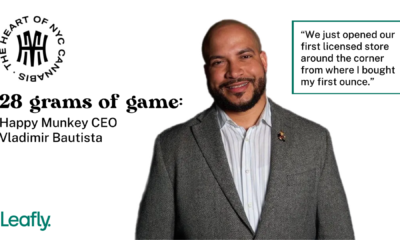

Vladimir Bautista is leading Happy Munkey’s legacy-to-legal takeover
-


Cannabis Can Help A Sore Throat
Cannabis News
Scientists Now Think That One Compound in the Cannabis Plant Can Replace All Opiates
Published
7 hours agoon
April 3, 2025By
admin

Which Cannabis Compound Do Scientists Think Can Replace Opiates?
…And Why This Is Important
Opiates are a type of pharmaceutical drug that’s been made from the opium poppy plant. While it’s somewhat a ‘natural’ substance that’s been extracted from the fibers and sap of the opium poppy plant, these are extremely dangerous sedatives that act on the central nervous system. However, there are completely synthetic opioids as well, which are manufactured entirely in laboratories.
Famous examples of well-known and widely-used opiates today include heroin, codeine, and morphine. They all work similarly, binding to the brain’s opioid receptors and users feel a drastic reduction in pain. It also causes users to feel euphoric, drowsy, or sleepy. Common side effects include constipation and nausea.
Because opiates are powerful for dulling one’s pain perceptions, they have become commonly prescribed by doctors and hospitals for pain relief. That said, opiates have become one of the world’s most addictive, dangerous, and fatal drugs – and you can get prescribed it right by your very own physician. Repeated use of opiates can easily lead to dependence and addiction, and eventually consuming high doses can drastically slow down breathing, and cause brain damage, or even death.
Since doctors still keep prescribing opioids, this has resulted in the deadly Opioid Epidemic, which has killed thousands of people. It’s a worrisome public health crisis, most especially because of fentanyl, an illegally manufactured opioid which is said to be 50 times more potent than heroin.
Could The Answer To The Opioid Epidemic Lie In Cannabis…Terpenes?
The past few years have shown that cannabis legalization is critical for surviving the opioid epidemic, and reducing overall opioid consumption.
The results of a recent research paper, which builds on past studies conducted by Dr. John Streicher, who is a member of the Comprehensive Center for Pain and Addiction, reveals fascinating findings. According to Streicher, cannabis terpenes were found to provide relief in inflammation models as well as on neuropathic pain caused by chemotherapy.
For the study, Streicher and his research team analyzed 4 kinds of terpenes that are found in mid to high levels in Cannabis sativa plants: linalool, geraniol, beta-caryophyllene, and alpha-humulene. They discovered that each terpene produced significant pain relief among mice subjects with fibromyalgia and post-operative pain, and among the terpenes, geraniol was found to be the most powerful.
“Our research is showing that terpenes are not a good option for reducing acute pain resulting from an injury, such as stubbing your toe or touching a hot stove; however, we are seeing significant reductions in pain when terpenes are used for chronic or pathological pain,” he said. “This study was the first to investigate the impact of terpenes in preclinical models of fibromyalgia and post-operative pain and expand the scope of potential pain-relieving treatments using terpenes,” Streicher said.
Cannabis terpenes are the compounds responsible for the aromatic profile of each strain; they are located in the plant trichomes. Not only do they contribute to each strain’s unique flavor and odor, but they also have valuable therapeutic and medicinal benefits. There are around 150 kinds of terpenes known today, though in the entire plant world, there are known to be some 20,000 terpenes.
Understanding the therapeutic benefits of terpenes is incredibly valuable also because they don’t contain THC (tetrahydrocannabinol), the compound in marijuana that gets you high.
“With fibromyalgia, there isn’t much of an understanding of what the pain state is, and there are not a lot of great options for treating it,” explains Streicher. “Our findings show that terpenes may be a viable treatment option for fibromyalgia pain, which could potentially have a large impact and make a difference for an under-treated population.”
Other Studies
This is not the first time that cannabis terpenes have been found to demonstrate excellent pain-relieving properties. It must be noted that just like what Streicher says, terpenes seem to do better with chronic pain management, instead of acute pain management.
Another study from 2024, which was published in The Journal of the Association for the Study of Pain, was conducted by researchers at the University of Arizona and the National Institutes of Health. The investigators analyzed the analgesic properties of different terpenes including geraniol, humulene, linalool, pinene, and caryophyllene among mice subjects with chemotherapy-induced peripheral neuropathy.
According to the researchers, all the terpenes delivered analgesic effects that were equivalent to around 10 mg/kg of morphine. It was also interesting to note that administering both morphine and terpenes together at low doses resulted in ‘enhanced’ pain-killing effects.
“Together these studies identify cannabis terpenes as potential therapeutics for chronic neuropathic pain,” said the investigators.
There have also been other studies that have found that combining cannabis with opioids can indeed provide long-lasting pain relief. It comes with the added benefit of reducing opioid doses needed for effective pain control. This phenomenon is called opioid-sparing. These types of protocols can be beneficial for patients who suffer from severe, chronic pain caused by cancer, arthritis, joint problems, fibromyalgia, diabetes, post-surgical pain, migraines, nerve damage, and so much more.
Conclusion
Learning more about the pain-killing properties of terpenes is extremely valuable for the medical community, patients, and even society as a whole. We can all do with less opioid addictions because it has torn families apart, and caused the deaths of thousands of people.
Terpenes, or cannabis in general, offer a natural and safe alternative that can be complementary to other pharmaceutical treatments designed to reduce pain.
SWAPPNG OPIOIDS FOR CANNABIS, READ ON…
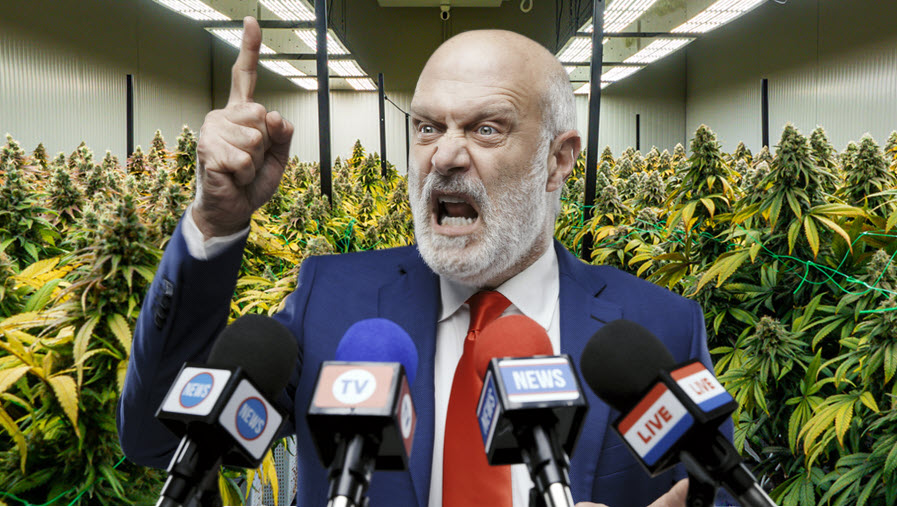
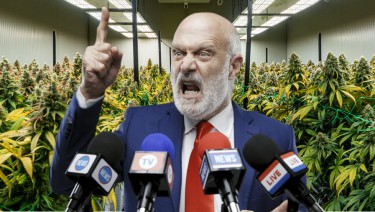
Cannabis and the Authoritarian State
Cannabis has been legal for longer than it has been illegal. Let that sink in for a minute. For thousands of years, humans cultivated and consumed cannabis freely across civilizations and continents. It wasn’t until the early 1900s that we witnessed a massive push to drive hemp and cannabis into the black market, primarily due to industrial competition from petrochemicals, pharmaceuticals, and other industrial applications.
What makes cannabis so threatening to powerful interests? For starters, hemp and cannabis are highly versatile crops with over 50,000 different uses, from medicine to textiles to fuel. Even more remarkable is how this plant is hardwired to work with the human body through our endocannabinoid system—a biological network we didn’t even discover until the 1990s.
Perhaps most threatening of all is that cannabis is insanely easy to grow. This means that if the plant helps you with a particular physical ailment, you have the ability to grow your own medicine indefinitely. No insurance premiums, no wait lists, no pharmaceutical middlemen—just you cultivating your own healing directly from the earth.
Authoritarians do not like this, not one bit. When people can meet their own needs independently, power structures lose their grip. When citizens can think differently without permission, control systems begin to fail. So today, we’re going to look at the interesting relationship between authoritarianism and cannabis, and how this humble plant plays a key role in keeping you free.
We’ve already established the versatility of cannabis, but there’s another element that those old D.A.R.E. PSAs inadvertently reveal about what authoritarians think about cannabis. I’m talking, of course, about “behavior.” You see, in an authoritarian system, you and I are but cogs in the machine. We’re the expendables who should be proud to work ourselves to death for our “fearless leaders.”
This is precisely why certain ideas, philosophies, religions, movements, books, and substances are typically banned in authoritarian regimes. Take North Korea as an example: everything from the type of television citizens watch to the music they hear is a tightly spun spell designed to keep the populace in check. While they don’t have explicit laws against hemp (they actually grow it industrially), smoking psychoactive cannabis is strictly forbidden.
Contrast this with places like Malaysia, where you can get up to 5 years for possessing just 20 grams of cannabis, and even face the death penalty depending on the situation. These authoritarians don’t play around when it comes to cannabis because they know it affects the behavior of their populace in ways they can’t control.
The question becomes: what behavior do they fear so much that cannabis produces within the individual?
The answer is a critical mind. People who consume cannabis often begin to question their own belief systems. Most regular users undergo some transformation in their values and perspectives. Cannabis has a unique way of helping people see beyond cultural programming and think outside established paradigms. It can make the familiar strange and the strange familiar—a psychological state that’s antithetical to authoritarian control.
This independent thinking runs counter to the narrative of authoritarians who wish to maintain a tight grip on social consciousness. If even 10% of a population begins to pivot in their behavior within a regime, it can have massive ripple effects. Just look at cannabis in the US—it went from being demonized to being embraced by the majority in less than 80 years, despite massive propaganda efforts.
For authoritarians, psychoactive cannabis isn’t primarily a threat to public health and wellbeing—it’s a threat to the health and wellbeing of authoritarianism itself. When people start thinking differently, they start living differently. When they start living differently, they start demanding different. And that’s the beginning of the end for any system built on unquestioning obedience.
Beyond the threat to thought control, there’s another reason why drugs in general remain illegal: the state can use prohibition as a weapon against the populace. This isn’t conspiracy theory—it’s documented history.
Take Nixon’s war on drugs. His domestic policy chief, John Ehrlichman, later admitted: “We knew we couldn’t make it illegal to be either against the war or black, but by getting the public to associate the hippies with marijuana and blacks with heroin, and then criminalizing both heavily, we could disrupt those communities.” Nixon essentially placed cannabis on the Controlled Substances Act because he needed an excuse to shut down anti-war protests and target Black communities.
Since hippies and anti-war protesters were smoking “freedom grass,” making it illegal would circumvent their freedom of speech and freedom of assembly, and more importantly—turn free citizens into state property. It’s a win-win if you’re an authoritarian looking to silence dissent.
Then there’s the whole “boogeyman” complex that prohibition creates. We’re told “drug dealers” are roaming the streets preying on innocents, giving them “marihuanas” so they can do vile things. What the government conveniently leaves out is how the banks these “dealers” use to launder their money remain untouched. They don’t mention the shadier dealings of law enforcement either—like running guns into Mexico (eventually leading to the death of one of their own), or spraying poison on crops, killing and hospitalizing people because, you know…”Drugs are bad!”
Authoritarians cannot let go of the value that keeping the most widely used illicit substance in the world illegal provides them. This explains why the US hasn’t federally legalized cannabis despite nearly 80% of Americans supporting some form of legalization. It’s not because they don’t have enough research or that they’re genuinely concerned about public health—it’s because prohibition gives them all the privileges of violating constitutional rights while siphoning money into their coffers.
Drug prohibition creates a perpetual enemy that can never be defeated, allowing endless justification for surveillance, militarized police, asset forfeiture, and expansion of state power. What authoritarian could resist such a convenient tool?
Cannabis is a plant. You can’t make nature illegal—it’s counter to the human experience. When governments attempt to criminalize a naturally occurring organism that humans have cultivated and used for thousands of years, they reveal the absurdity of their position and the limits of their authority.
While the United States isn’t a full-on authoritarian state (yet), the truth is that many authoritarian elements have played out over the years. You only need to look as far as the war on drugs to see how the state utilizes prohibition as a weapon to their advantage. From no-knock raids to civil asset forfeiture to mass incarceration, drug laws have erected a parallel legal system where constitutional protections often don’t apply.
The fundamental truth is that cannabis is not only versatile and medicinal, it gives you back your autonomy in multiple ways. It helps you think for yourself. It allows you to grow your own medicine. It connects you with a plant that humans have used ceremonially, medicinally, and industrially throughout our history. And this autonomy is something authoritarians cannot stand—free individuals who know how to think beyond the narratives they’re fed.
Cannabis doesn’t just get you high—it offers a perspective from which the absurdities of prohibition become glaringly obvious. Perhaps this is why, as state after state legalizes, we’re witnessing the slow but steady unraveling of one of the most enduring authoritarian policies in American history.
So if you count yourself among those who value freedom of thought and bodily autonomy, who believe that nature doesn’t require government permission, and who understand that true liberty includes the right to explore your own consciousness—well, maybe it’s time to toke one up for freedom!
LEGALIZING CANNABIS IS NOT ENOUGH, READ ON..
Cannabis News
Stop Using Bat Poop to Fertilize Your Weed Plants Immediately, Here is Why…
Published
2 days agoon
April 1, 2025By
admin

Don’t Fertilize Your Weed with Bat Poop
Fertilization is a critical step for growing healthy marijuana plants.
They help provide essential nutrients for marijuana in various stages of growth, while promoting plant growth. There are dozens of different fertilizers to choose from in the market; growers can choose based on budget, nutrients needed, location, season, and much more. But not all fertilizers are made equally – of course, some are of better quality than others.
That said, there are some rather unusual fertilizers that can be used on plants. These may include, but are not limited to: coffee, milk, grass clippings, banana peels, fish tank water, potato water, and even urine! Yes, it does sound strange, but to gardening enthusiasts, there is nutritional value to be found in each of these things, which can make them suitable fertilizers depending on the circumstances.
For example, grass clippings make excellent mulch and can provide potassium, nitrogen, and phosphorus. Urine is a potent source of nitrogen as well as phosphorus. Banana peels are rich in calcium, which is excellent for promoting root growth while helping supply oxygen to the soil.
But what about bat poop? Also known as guano, bat poop has been said to work as a plant fertilizer because it’s rich in nitrogen, potassium, phosphorus, and other nutrients. Unfortunately, using bat poop as a plant fertilizer can also be dangerous. So if you don’t really know what you are doing, bat poop as a fertilizer can be extremely risky.
Bat Poop Fertilizer Kills 2 NY Men
On December 2024, news of two men hailing from Rochester, New York, dying went viral.
The cause of death was dangerous fungus, in the bat poop that they were using to fertilize their marijuana plants. Both men grew their own marijuana plants for medical consumption, but unfortunately developed histoplasmosis after breathing toxic fungal spores from the guano.
One of the men was aged 59 years old; he bought bat poop online to use as fertilizer for his plants. Meanwhile, the other was a 64-year-old male who found guano in his attic, then decided to use it to fertilize his cannabis plants. They both developed similar symptoms, including chronic coughs, fever, severe weight loss, and respiratory failure. The case was also discussed in the Open Forum Infectious Diseases medical journal.
Is there a safe way to use bat poop as fertilizer? If you ask me, I truly can’t understand why one would use guano as fertilizer when there are so many other proven safe alternatives out there that are simply not as risky. According to the University of Washington, one must always wear a dust mask each time you open a bag containing soil amendments. That’s because a mask will greatly decrease the chances of breathing in fungal spores, which could be potentially dangerous. They also go on to explain that yes, guano is indeed used as fertilizer for its valuable nitrogen content but it still isn’t without its own risks, particularly of developing Histoplasma – the same condition that killed the two men.
Make Your Own Safe Fertilizers At Home
There are many other safe, affordable – and even free – fertilizers you can feed your marijuana plants with. It doesn’t have to cost a fortune nor does it have to be risky to your health.
Check out these easy, low-cost, DIY fertilizers for weed:
-
Coffee grounds are abundant in nitrogen, which makes it perfect for the vegetative stage of marijuana plants. They are also a fantastic source of organic materials and green waste, which contain other vital nutrients. When the coffee grounds decompose, they create soil aggregates that improve soil aeration and its water retention capabilities.
Mix around 2 grams of coffee ground for every liter of soil. Measuring its pH levels is also helpful, since you want it to be between 6 to 6.5
-
Crushed eggshells are a great way to ensure no eggshells go to waste. It’s rich in calcium plus other minerals that are effective in improving overall plant structure, health, and growth. In fact, so many gardeners and farmers commonly use crushed eggshells to help boost plant growth – and it will work just as well for marijuana plants.
They’re really easy to use, too! Just mix eggshells into the soil, or steep them into water then pour into the soil for a calcium-packed feed.
-
Banana tea or water is rich in potassium and magnesium, making it perfect as a feed during the marijuana plant’s flowering stage. You can use banana peels differently: with 3 to 5 banana peels, soak it in water for 2 days. Then you can use the water on your plants, and even leave the banana peels as compost for your garden.
-
Wood ash from your fireplace or other sources is a great source of phosphorus and potassium. Simply sprinkle some wood ash over marijuana during the final flower phase. Just use 1 or 2 grams of ash for every liter of substrate. Be careful not to use too much wood ash, or it can make the soil too alkaline.
-
Animal manure, such as those from cows, rabbits, or horses, make excellent organic fertilizers. Just be sure that they’re composed properly so that you avoid introducing weed seeds, or pathogens.
These low-cost fertilizers are also natural and effective. There’s no reason for you to turn to bat poop as fertilizer, even if you’re in a bind.
Conclusion
Guano or bat poop is a poor choice of fertilizer if you don’t know what you are doing. It’s risky and potentially dangerous – just not worth it. Instead, fertilize your marijuana plants with these options mentioned.
BEST POOP FOR CANNABIS PLANTS, KEEP READING…

The Best Tips To Update Your Wardrobe

Former New York Knick Iman Shumpert debuts ‘TSA Approved’ legal cannabis brand

How New York pot pioneers made it to legal dispensary shelves

Scientists Now Think That One Compound in the Cannabis Plant Can Replace All Opiates

Vladimir Bautista is leading Happy Munkey’s legacy-to-legal takeover

Cannabis Can Help A Sore Throat

Cannabis and the Authoritarian State

As cannabis consumer tastes evolve, industry must look beyond potency

Article: Early 2025 Empire State Psychedelic Policy Roundup

White House Finally Comments On Marijuana Industry

Distressed Cannabis Business Takeaways – Canna Law Blog™

United States: Alex Malyshev And Melinda Fellner Discuss The Intersection Of Tax And Cannabis In New Video Series – Part VI: Licensing (Video)

What you Need to Know

Drug Testing for Marijuana – The Joint Blog

NCIA Write About Their Equity Scholarship Program

It has been a wild news week – here’s how CBD and weed can help you relax

Cannabis, alcohol firm SNDL loses CA$372.4 million in 2022

A new April 20 cannabis contest includes a $40,000 purse

Your Go-To Source for Cannabis Logos and Designs

UArizona launches online cannabis compliance online course
Trending
-

 Cannabis News2 years ago
Cannabis News2 years agoDistressed Cannabis Business Takeaways – Canna Law Blog™
-

 One-Hit Wonders2 years ago
One-Hit Wonders2 years agoUnited States: Alex Malyshev And Melinda Fellner Discuss The Intersection Of Tax And Cannabis In New Video Series – Part VI: Licensing (Video)
-

 Cannabis 1012 years ago
Cannabis 1012 years agoWhat you Need to Know
-

 drug testing1 year ago
drug testing1 year agoDrug Testing for Marijuana – The Joint Blog
-

 Education2 years ago
Education2 years agoNCIA Write About Their Equity Scholarship Program
-

 Cannabis2 years ago
Cannabis2 years agoIt has been a wild news week – here’s how CBD and weed can help you relax
-

 Marijuana Business Daily2 years ago
Marijuana Business Daily2 years agoCannabis, alcohol firm SNDL loses CA$372.4 million in 2022
-

 California2 years ago
California2 years agoA new April 20 cannabis contest includes a $40,000 purse






